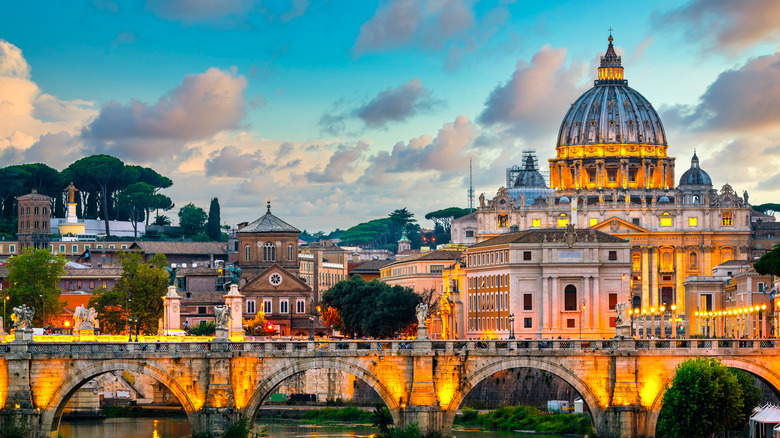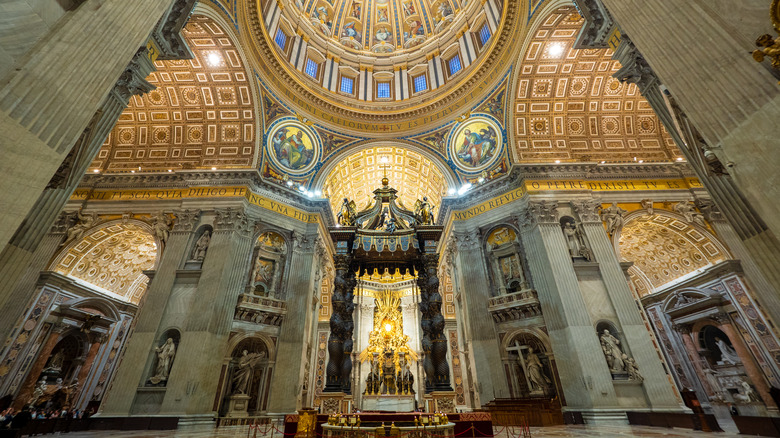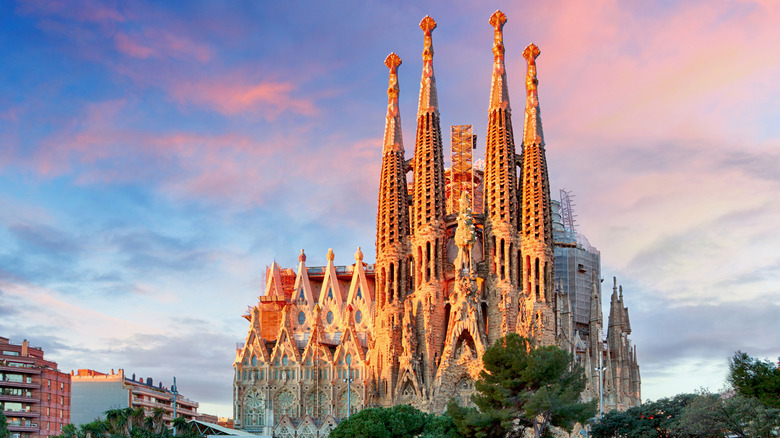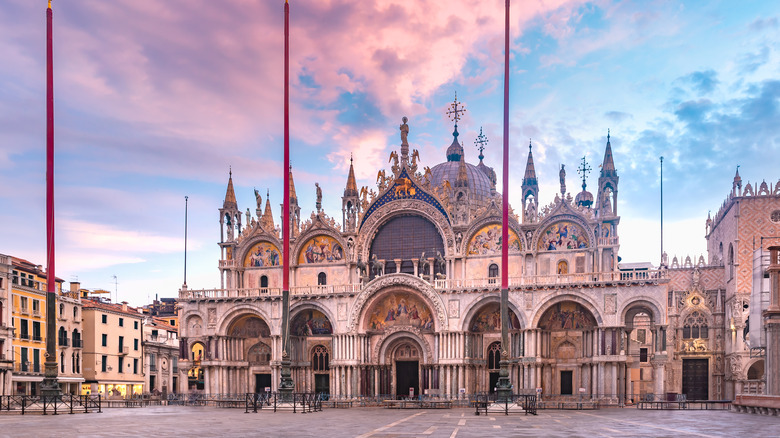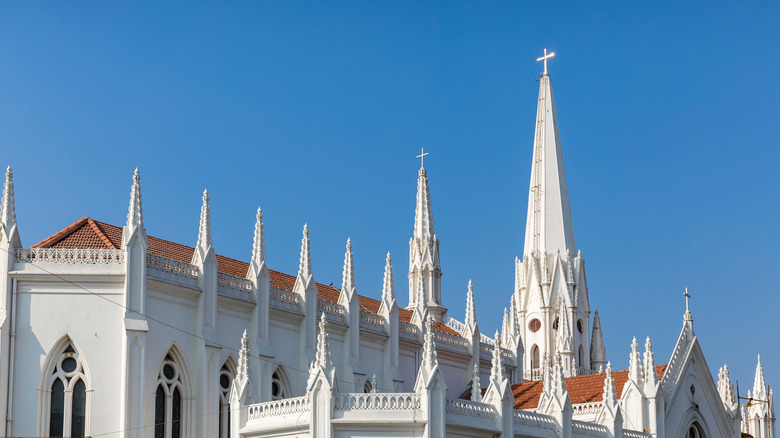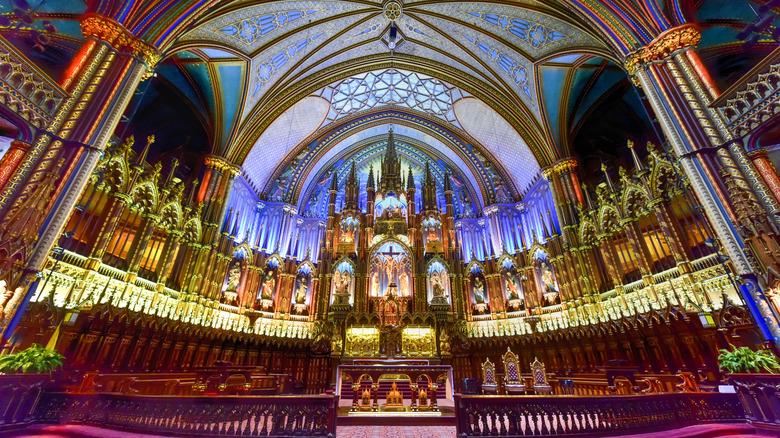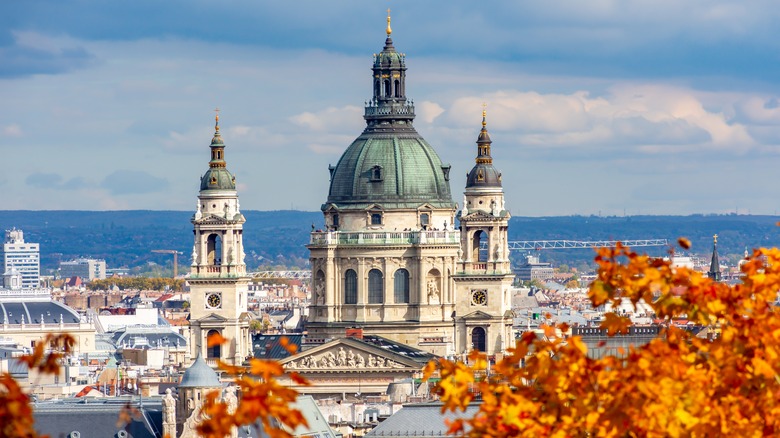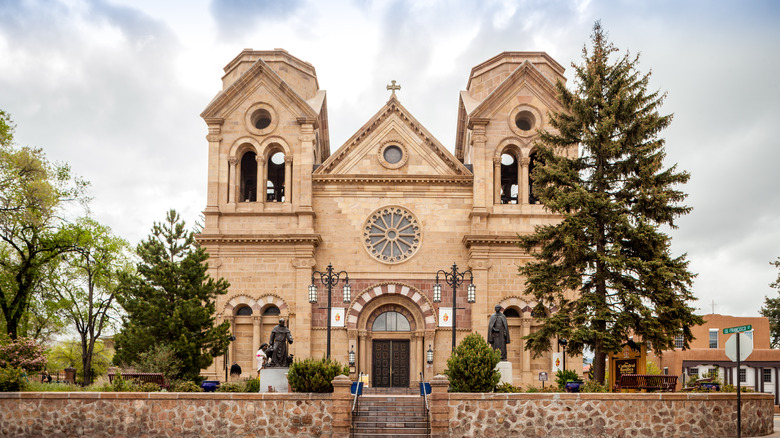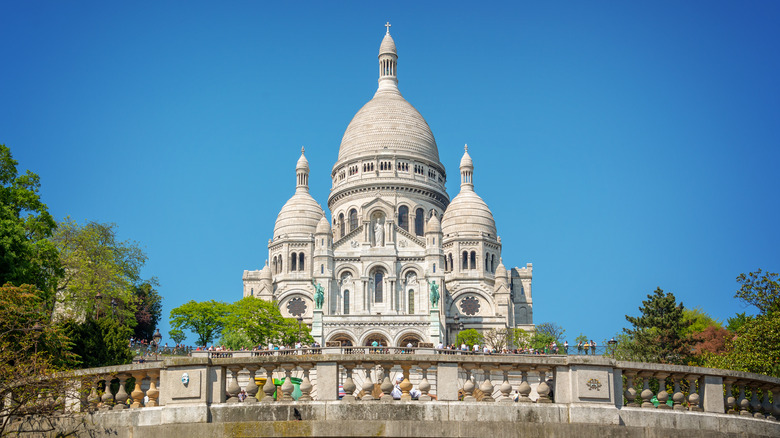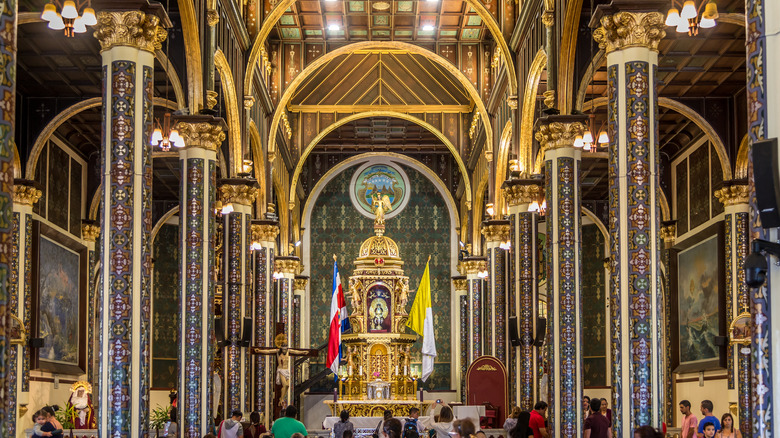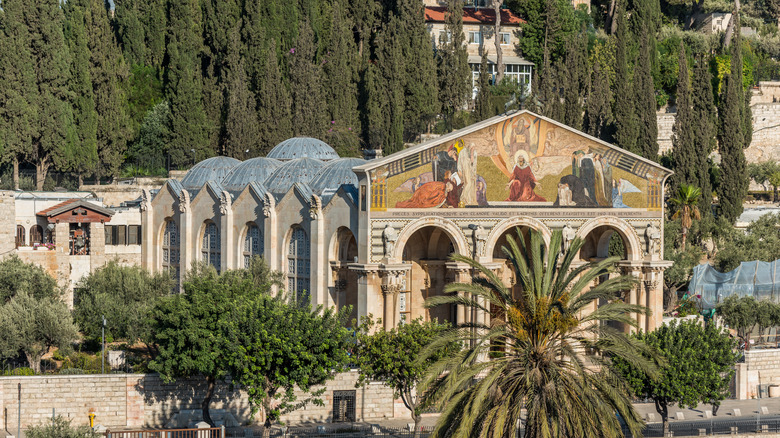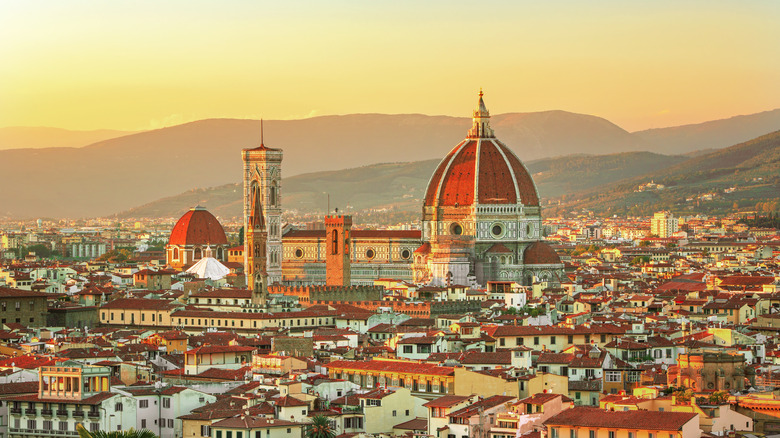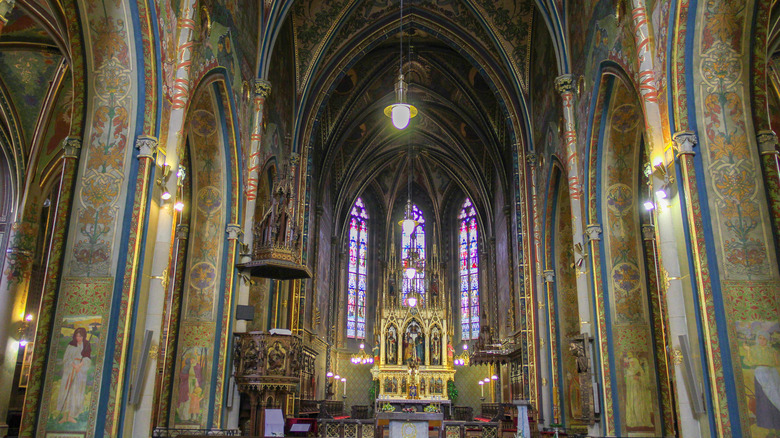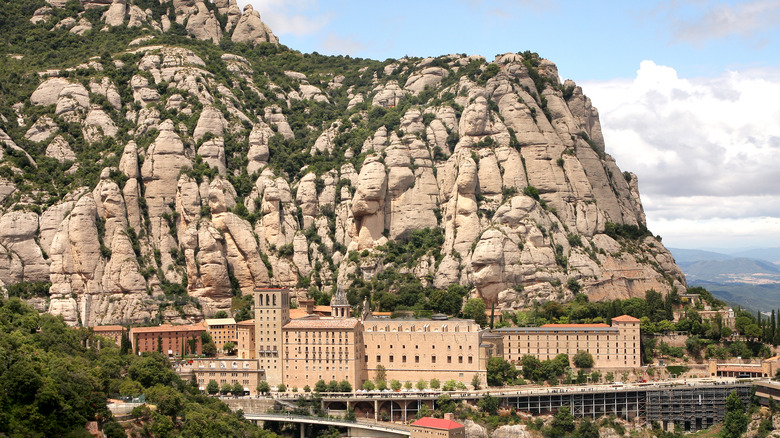The Most Stunning Basilicas Around The World
Throughout human history, the Catholic faith has inspired magnificent artwork, literature, and architectural treasures. The faith's houses of worship are known for their particular extravagance, often serving as an oasis of beauty and peace. While there are Catholic churches all over the world, only a select few have been given the honor and privilege of the title of basilica. According to The Basilica of St. Peter and St. Paul, churches are named basilicas by the pope due to their value as historic and significant places of worship. Often these buildings have stunning artistic or architectural features, and are associated with a major saint.
Regardless of your religious views, there are plenty of reasons to visit grand, old basilicas. Millions of people travel across the world to marvel at these incredible structures, pay their respects, and find serenity. Here, we are counting down the world's most beautiful basilicas from around the globe.
Saint Peter's Basilica is counted among the world's grandest buildings
This list would not be complete without St. Peter's Basilica in Vatican City. Words do little to describe the experience of visiting this breathtaking site, which is often considered to be the most important example of Renaissance architecture. The interior of this holy Catholic shrine is like a treasure chest, boasting the highest dome in the world and numerous masterpieces. Stepping inside, one's eyes are drawn to numerous works of art, particularly Michelangelo's Pieta, the statue of St. Longinus, and the bronze cathedral of St. Peter.
Construction on the current basilica began in 1506 and completed over a hundred years later in 1615. Some of the most famous artists and architects of the age were involved in its design, including Michelangelo, Bramante, and Raphael. However, the history of the site dates all the way back to the 4th century, when Emperor Constantine decided to build a basilica, according to Lonely Planet. The emperor wanted to commemorate the final resting place of St. Peter the Apostle, the first pope according to tradition. This holy place was a pilgrimage site throughout the middle ages and continues to be a place of major significance for members of the Catholic faith, as well as art lovers, historians, and culture buffs from all religious backgrounds.
La Sagrada Familia is still under construction
A stunning feat of architectural genius, La Sagrada Familia is considered to be the masterpiece of architect Antoni Gaudi. While Gaudi passed away in 1926 while the church was only about 25% finished, his vision paved the way for the innovative and expressive structure, according to La Sagrada Familia's official website. La Sagrada Familia is a combination of Gothic Revival, Art Nouveau, and Gaudi's signature Modernisme style. Inside, there are many elements connected to the natural world. The two interior pillars are modeled after trees and supported by a tortoise and turtle, which are supposed to represent the earth and sea. Additionally, concrete animals can be found scattered throughout the building's surroundings.
Although La Sagrada Familia is still under construction and has already taken more time to complete than the Egyptian Pyramids, the building is already designated a UNESCO World Heritage Site and a basilica by Pope Benedict XVI. Not surprisingly, the breathtaking structure is one of the most visited sites in the world. This is good news, since the ongoing construction project is funded entirely by visitor donations.
St. Marks Basilica is nicknamed 'Church of Gold'
The stunning St. Mark's Basilica tops the list for most people visiting Venice, and for good reason. This grand Byzantine cathedral commands attention from its perch in Piazza San Marco, the city's main central square. Originally built in 829, the first basilica standing in this site burned down in 926 as part of a political revolt, per Britannica. The current basilica was completed in 1071 and features a fantastic array of intricate detail, architectural work, and artistic treasures. The exterior of the building showcases golden mosaics depicting the life of Jesus and is topped by five domes. Above the central window rests a winged lion, the official symbol of Venice.
Inside the basilica, there is an astounding amount of gold (perhaps why it is nicknamed "Church of Gold") and Christian art. The building is laid out in a Greek cross design, with each arm divided into three naves. The remains of St. Mark currently lie protected inside the basilica, but the story of how they reached Venice is one-of-a-kind. In 828, the relics were kept at the sanctuary of St. Mark in Alexandra, Egypt. When the governor declared his intent to destroy the sanctuary and use its marble as building material, Venetian merchants hatched a plan to kidnap the relics from Alexandria. By hiding the saint's relics in a container of pork, they were able to breeze past city officials who did not even give them a second look.
St. Thomas Basilica is a vision in white
Built over the remains of its namesake Thomas the Apostle, St. Thomas Basilica is a site of enduring religious significance and cultural importance. St. Thomas first arrived in India in A.D. 52 and quickly gained a reputation for having healing powers. From conducting baptisms to performing miracles, St. Thomas is largely attributed with bringing Christianity to India and is now known as the Patron Saint of India. Located in Chennai, India, the basilica dates back to the 16th century when Portuguese explorers designed and built the structure. According to Culture Trip, the building was eventually rebuilt in the 19th century by British colonizers and designated a minor basilica in 1956 by Pope Pius XII.
Visitors to the basilica can experience beautiful stained glass windows and soothing interior spaces, along with a museum displaying St. Thomas' fingerprint and other artifacts. Since it is not far away from the ocean, the sound of waves is often audible from inside the basilica.
The Notre-Dame Basilica of Montréal is designed to inspire wonder
Regardless of one's faith, stepping inside the Notre-Dame Basilica of Montréal is a religious experience. This breathtaking Gothic Revival church is lit up with every color in the rainbow and features an imposing organ, stained glass windows, and gold leaf art. From the ceiling to the pews, every inch is designed to inspire wonder. The two towers are modeled after the Notre-Dame-de-Paris and the statues of Saint-Joseph, the Virgin Mary, and Saint-Jean-Baptiste stand guard over the entrance.
The history of the church is no less impressive. When Montreal was first founded in 1642, a modest stone church was constructed to honor the Virgin Mary, according to Culture Trip. A fancier, baroque-style church eventually replaced it in 1672. However, as Montreal's population grew, the city required a larger church by the 1820s. Designed to hold some 8,000 parishioners, the present-day basilica is grand gathering space commemorating Montreal's religious history. The church functions as the city's main place of worship and an event space for international concerts and musical performances.
St. Stephen's Basilica is Hungary's most sacred church
While some of the best views of Budapest can be found by climbing 300 steps up to the dome of St. Stephen's Basilica, there were some challenges involved with completing this magnificent neoclassical structure. In 1868, the dome actually collapsed during bad weather because of defects in the donated stones and poor workmanship. Construction had to be paused for over a year so the debris and damaged pieces could be cleared away. Eventually the building process began again and the basilica was finished in 1905, according to Lonely Planet.
This renowned Catholic basilica contains many treasures, including ecclesiastical objects and St. Stephen's mummified hand. Known as the Holy Dexter, this hand is believed to have extraordinary power and pilgrims have been traveling to view this relic in person for centuries. St. Stephen is not only the patron saint of the church, but also the founder of the Hungarian state.
The Cathedral Basilica of St. Francis of Assisi honors the first Native American Catholic saint
For a peaceful moment, step inside the Cathedral Basilica of St. Francis of Assisi, settle into a pew, and soak in the serene stillness. This historic New Mexico cathedral was built between 1869 and 1886 by Jean-Baptiste Lamy around the town's existing small adobe church. By building a larger Romanesque church, Lamy hoped to distinguish the state's Catholics from those down south in Mexico. While the church's two towers are supposed to be crowned with slender spires, Lamy soon went over budget and could not realize his grand vision, per Hatchette Book Group.
However, the basilica's interiors are no less magnificent. From the stained glass windows depicting French apostles to the baptismal font and oil paintings by Southwest artist Miguel Cabrera, there are plenty of noteworthy sights. One of the most unique aspects of the cathedral is the mix of indigenous culture and religious icons brought from Europe. Outside, a sculpture of the first Native American Catholic saint, Kateri Tekakwitha, rests in front of the building's entrance.
Sacré-Coeur Basilica is a symbol of Paris
No matter where you are in Paris, odds are Sacré-Coeur is visible from its perch atop the Butte de Montmartre. From the beginning of time, this hill has been a sacred site for worshippers. In the 19th century, the construction of Sacré-Coeur continued the long tradition. The church was built after France was defeated by Germany in war. Believing France's problems to be caused by spiritual reasons, Alexandre Legentil and Hubert Rohault de Fleury decided to construct a church dedicated to the Sacred Heart of Jesus as a sign of penitence and good faith. After the plans were approved, a public competition was held to choose the best design plans. Architect Paul Abadie won, and in 1875 construction of the Romano-Byzantine basilica began. According to the Sacré-Coeur website, the building draws inspiration from Venice's St. Mark's Basilica.
Today, the beautiful building is a symbol of Paris and millions of visitors flock here each year. Inside, there are stained glass windows, mosaic artwork, and a majestic organ. Climbing the 222 steps to the top of the dome reveals impressive views over all of Paris and the countryside beyond.
Basilica of Our Lady of the Angels is steeped in local legend
According to local legend, the Basilica of Our Lady of the Angels is inspired by a little girl who discovered a statue of the Virgin Mary holding Jesus in the city. After finding the statue sitting on a rock, she took it home. However, the statue disappeared by the time she woke up in the morning. She retraced her steps, only to find that the statue was back on the original rock. Then, the girl brought the statue to her local priest who tried locking it away. The next morning, the statue was once again back on the rock. The basilica is built on this exact site in Cartago, Costa Rica, and the statue of the Virgin Mary now rests inside within a golden box.
Originally constructed in 1639, the church has since been salvaged and rebuilt after suffering severe earthquake damage. The current basilica is actually the third version. According to Britannica, it is a popular destination for pilgrimages and over 2.5 million people make the trip each year.
Basilica of the Agony enshrines bedrock where Jesus is believed to have prayed
The stunning Basilica of the Agony marks the site where Jesus is believed to have spent the night before his arrest and crucifixion, praying with anguish in the Garden of Gethsemane. Located near the base of the Mount of Olives in Jerusalem, the church was built in 1924 to honor and enshrine the bedrock where Jesus sat, per the Israel Ministry of Foreign Affairs. The current building sits upon the foundations of two ancient temples, indicating the sacredness of the site.
Many countries helped fund construction of the church, which is also known as the Church of All Nations. To commemorate their donations, the symbols of 12 nations, including Argentina, Brazil, Canada, France, Mexico, and the United States, decorate the inside of the roof domes. On the ground level, parts of the original mosaic floor from the 4th century Byzantine church are carefully preserved under glass. If you feel a somber and sorrowful atmosphere inside, this is no accident. Architect Antonio Barluzzi purposefully designed dark interiors to make it feel like the night of the Agony inside the basilica.
Cathedral of Santa Maria del Fiore looms over Florence's skyline
Home to world-famous statues, mouthwatering pasta, and some of the oldest gelato shops in the world, the city of Florence has no shortage of impressive sights, sounds, and tastes. And yet, rising above them all is the Cathedral of Santa Maria del Fiore, known to locals as the Duomo. The largest masonry dome in the world, this architectural marvel forms the center of Florence's beautiful skyline. It took over 140 years to complete, according to Culture Trip, perhaps because there was no technology available to build the dome when construction started in 1296.
After the basilica was completed, it was dedicated to the Virgin of the Flower in tribute to the lily, the symbol of Florence. The large Gothic building is covered in decorative pink, white and green marble patterns, while the inside is relatively simple. Notable features include the mosaic floors, a working clock dating back to 1443, and a series of stunning frescoes designed by Giorgio Vasari.
The Basilica of St. Peter and St. Paul rises 58 meters into the sky
In a city of striking architectural gems, the Basilica of St. Peter and St. Paul manages to make itself seen and heard. Every hour, bell chimes from the towering church ring out over Prague's lovely Vyšehrad district. Rising 58 meters into the sky, the distinctive twin towers have been around since 1903 when construction of the most recent version of the church was completed. However, a church has stood on this site long before their arrival.
The original temple was built in 1070 by Czech King Vratislav II as a Romanesque basilica with three aisles. After a fire damaged the building in 1249 it was renovated and turned into a Gothic-style church. Over the years, the building received many more renovations and style changes (including Renaissance and Baroque) before eventually settling on its current neo-Gothic design by architect Josef Mocker, per Vyšehrad. The interiors are truly a sight to behold, featuring vivid art-nouveau frescoes from a variety of famed Czech artists.
Basilica of the Mother of God of Montserrat is surrounded by mystical mountains
The mystic mountains of Montserrat have been inspiring poets, artists, and worshippers for generations. It's no wonder that Catalan poet Verdaguer thought that "the angels cut those hills" to build a royal home for the Virgin Mary. Since the 11th century, this rugged natural setting has been home to a Benedictine monastery. The current community is composed of 80 Benedictine monks who commit their lives to prayer, reflection, and service.
While the original monastery is gone, visitors can still see remains of a 12th century church and the current 16th century abbey. In 1881, Pope Leo XIII made the church a basilica. Today, this religious symbol of Catalonia is recognized for the venerated Virgin of Montserrat wooden sculpture, known as the Black Madonna, and the Escolanía, one of the oldest boys' choirs in Europe. According to Tourist Guide Montserrat, visitors traditionally pay their respects by touching or kissing the Virgin's hand while holding out the opposite hand for Jesus.

